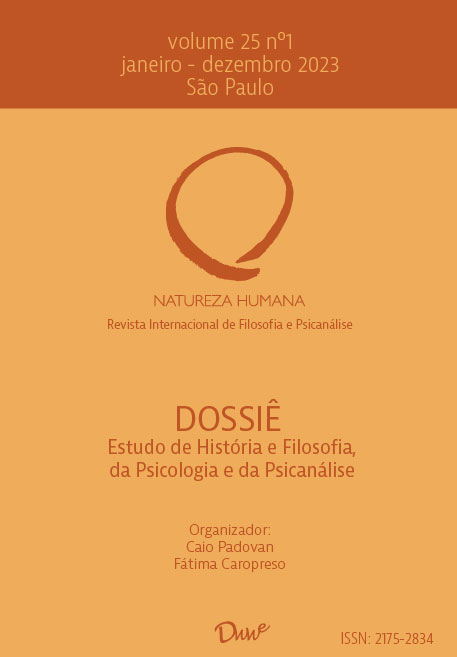Dinosaurs, pyramidsand symptoms: similarities of object and method between clinical psychoanalysis and the historical sciences
DOI:
https://doi.org/10.59539/2175-2834-v25n1-578Keywords:
clinical psychoanalysis; historical sciences; inference to the best explanation; bayesianism; Adolf Grünbaum.Abstract
Since the outset of psychoanalysis, philosophers have identified problems in the epistemological pretensions of its clinical method or at least in the disposition of psychoanalytic communities to overcome its epistemological shortcomings. Thus, many still investigate to which degree and by which rationale the data ensued by the clinical-psychoanalytic method would be able to soundly or cogently support hypotheses about the behavior of individuals and classes of individuals as well as about some operations of the human mind in general. One of the ways to elaborate the actual and the potential logic of both the generation and the justification of hypotheses in a certain science is through its comparison to sciences that are akin to them. Clinical psychoanalysis has been exhaustively compared to the historical sciences since Freud, certainly because both fields deal with inconstant objects and because the causal inferences of both fields are retrospective. Some implications of this comparison, however, are yet to be properly explored. In this paper, we first show how this comparison is long-lasting and rich in the history of psychoanalysis. Secondly, we characterize the abductive, or explicationist, model that the epistemologist Carol Cleland has proposed to elucidate the powers and limits of the method of causal inference of historical natural scientists and we discuss how such a method would also elucidate the method of causal inference employed by clinical psychoanalysts. Finally, we present the arguments of another epistemologist, Aviezer Tucker, according to whom a rigorous Explicationism in the historical sciences would also be a Bayesianism, and we indicate that grounding clinical psychoanalysis through a bayesian Explicationism is a promising endeavour. We conclude that discussions like these provide vigorous responses to positivistic critiques of the psychoanalytic method, such as Adolf Grünbaum’s, as well as move the psychoanalytic community away from an unproductive rhetoric, namely, the one which portrays that method as radically singular in relation to all other scientific methods.Downloads
Published
2023-05-24 — Updated on 2023-05-24
How to Cite
Tannous, H. (2023). Dinosaurs, pyramidsand symptoms: similarities of object and method between clinical psychoanalysis and the historical sciences: . Human Nature - International Philosophy and Psychology Review, 25(1), 29–57. https://doi.org/10.59539/2175-2834-v25n1-578
Issue
Section
Dossiê Estudos de História e Filosofia da Psicologia e da Psicanálise








